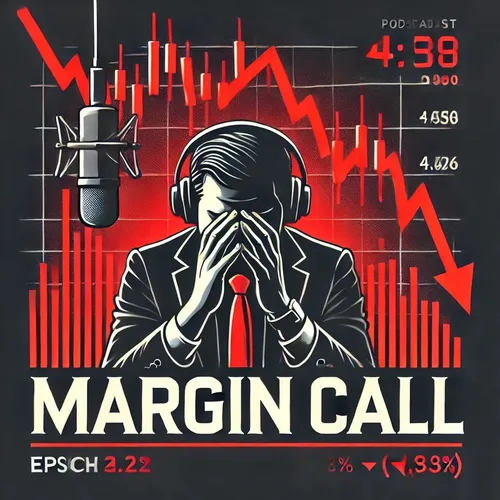Margin Calls: Treacherous Terrain for Leveraged Short Sellers
- Author
- Quiet. Please
- Published
- Mon 04 Aug 2025
- Episode Link
- https://www.spreaker.com/episode/margin-calls-treacherous-terrain-for-leveraged-short-sellers--67243889
A margin call is a critical moment for anyone trading with borrowed money, especially those holding short positions. When listeners trade on margin, they are effectively borrowing funds from their broker to amplify their buying or selling power. This leverage magnifies both profits and losses. If the market moves against the position, and the value of the trader's account falls below a set maintenance margin, the broker issues a margin call. This requires the trader to deposit more funds or sell assets to cover the shortfall, highlighting just how risky leveraged trading can become.
Short selling, commonly known as taking a short position, is when a trader bets that the price of a particular asset will decline. The process involves borrowing shares from a broker and selling them at the current market price, with the hope of buying them back later at a lower price, returning them to the broker, and pocketing the difference. The entire strategy hinges on correctly predicting a market drop. However, unlike traditional investing where the maximum loss is capped at the initial investment, short selling carries theoretically unlimited risk. If the price rises instead of falling, the short seller must buy back the shares at a higher price, leading to significant losses.
When markets turn unexpectedly and prices rise rapidly, short sellers find themselves “short squeezed.” In such scenarios, rising prices force many traders to cover their positions at a loss, creating a feedback loop that can drive prices even higher. For those using margin, things escalate quickly. As soon as the account’s equity dips below minimum requirements due to adverse price movement, brokers issue margin calls. If the short seller cannot meet the call by adding cash or liquidating other positions, brokers may forcibly close out trades, often at unfavorable prices. This can result in harrowing losses that far exceed what traders initially put on the line.
Recent high-profile cases in both traditional and crypto markets illustrate the dangers. One instance reported by Onchain Lens detailed a crypto trader who lost $10 million in a single day due to a massive rebound in the market, despite holding $195.8 million in open short positions with leverage ranging from 20x to 40x. In highly volatile sectors like crypto, even a minor upward movement in prices can wipe out leveraged short positions, triggering margin calls and forced liquidations. These losses can materialize so rapidly that some traders may have scant chance to react before their positions are closed automatically.
The risks for short sellers on margin extend beyond just price movements. In thin or illiquid markets, spikes can be especially sudden, and positions become even more vulnerable to margin calls. Brokers typically increase margin requirements during periods of high volatility, so traders might receive margin calls even when prices move only slightly against them. According to many trading platforms, this protective measure aims to shield both the brokerage firm and traders from catastrophic losses, but it nonetheless places short sellers in a fragile position when volatility spikes.
In practice, short sellers must be vigilant, employing robust risk management practices. Tools like stop-loss orders can limit potential losses, but they are not foolproof in fast-moving or illiquid markets. Larger, institutional traders may use complex hedging strategies to offset risk. For individual traders, the lesson is plain: trading short with margin amplifies both risk and pressure, and a single market swing can be enough to put their entire capital at risk.
Thanks for tuning in, and don’t forget to subscribe. This has been a Quiet Please production, for more check out quietplease.ai.
For more http://www.quietplease.ai
Get the best deals
